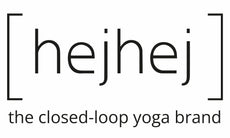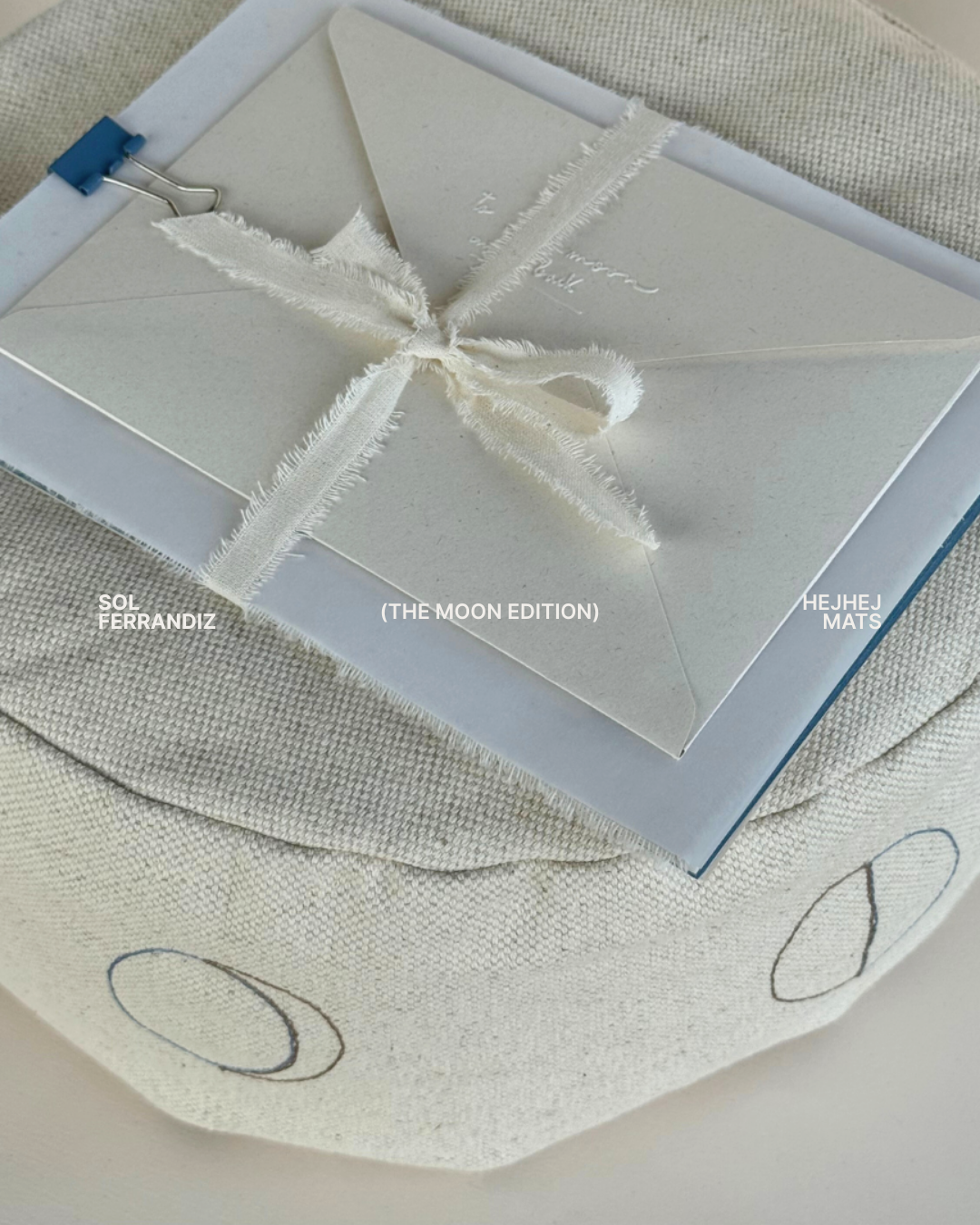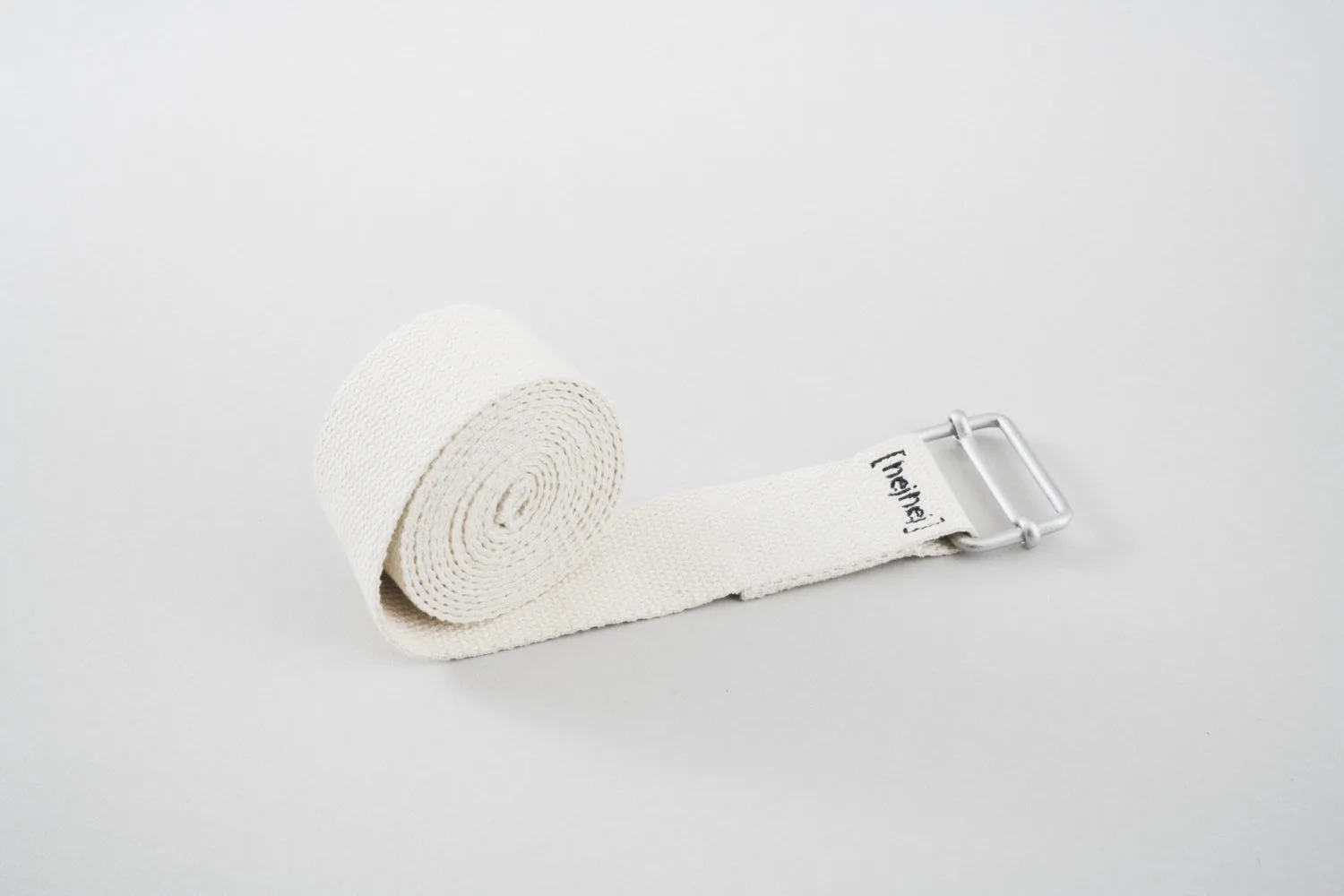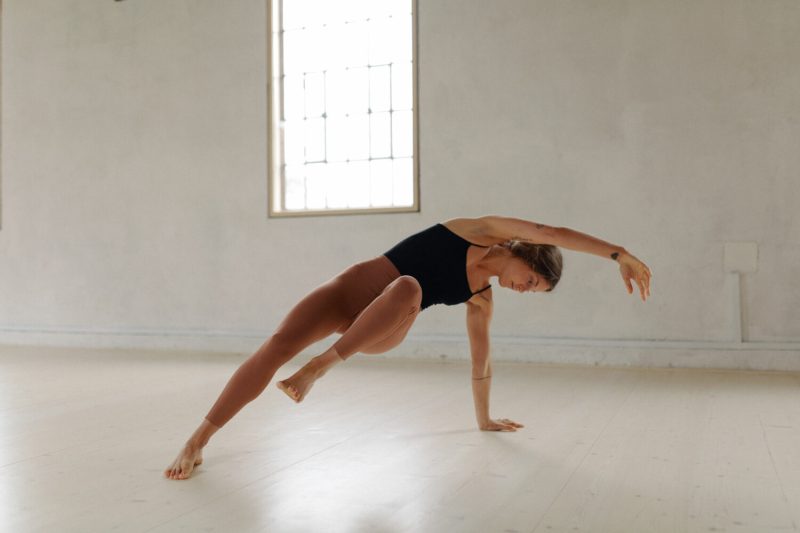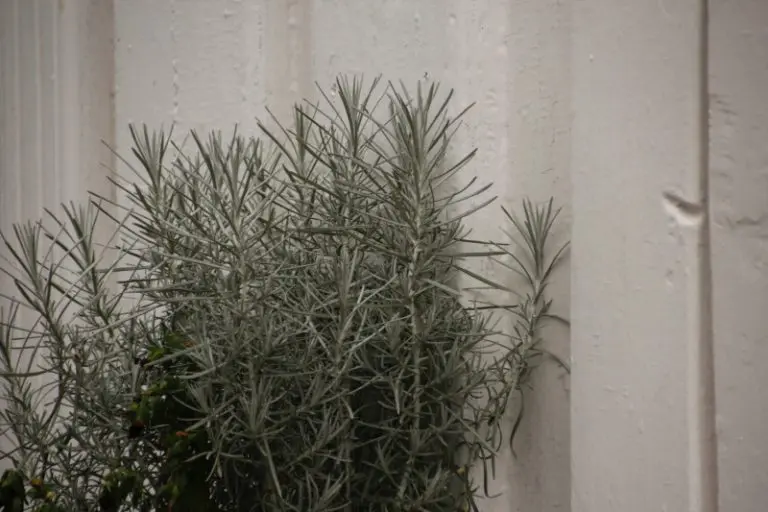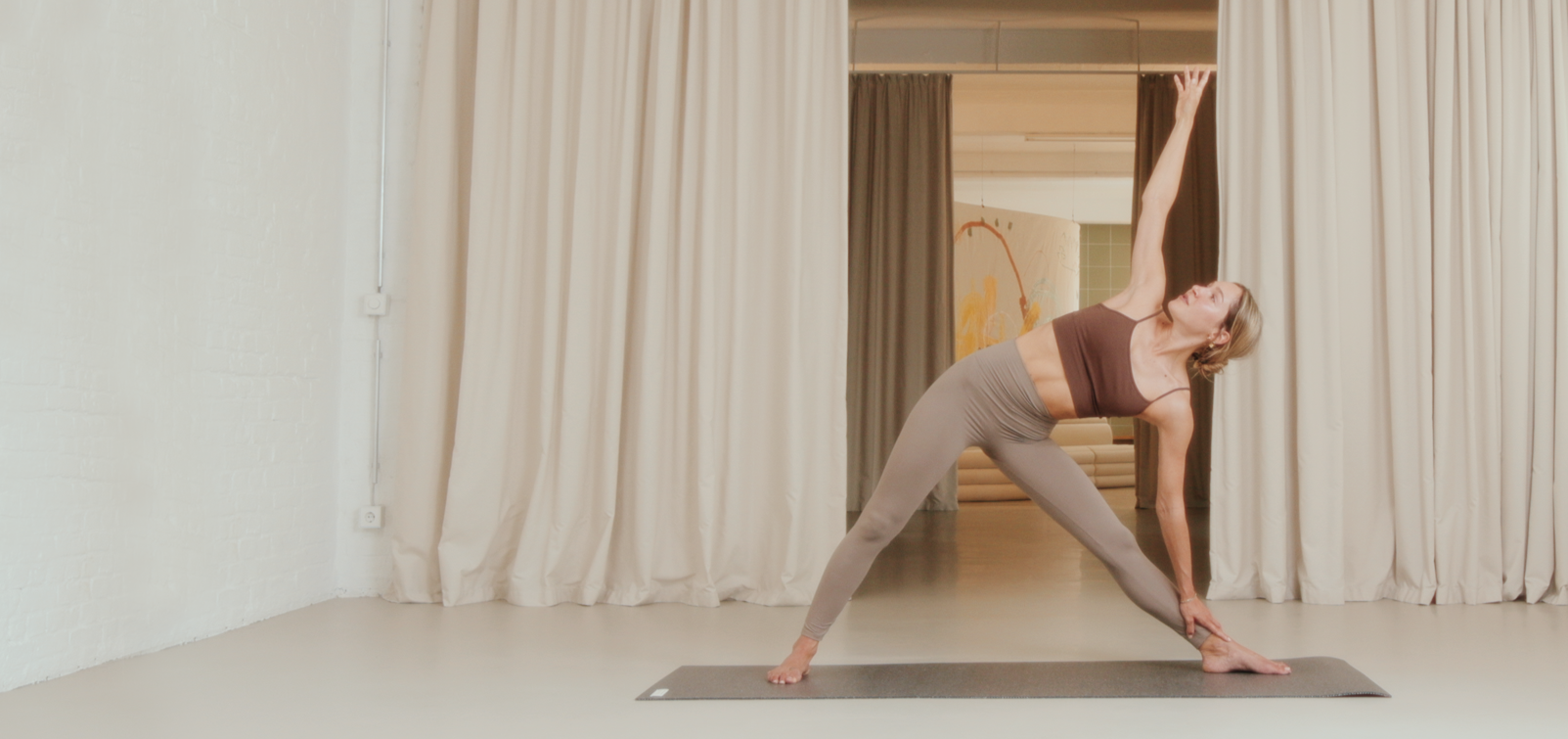A yoga strap can be very helpful for your yoga practice. Not only beginners but also experienced yogis can dive deeper into the practice with the strap. For us, it often depends on the day how we feel during the yoga, so the strap can be used just when we are a little uncertain or the day is just not going that well. A yoga strap is also a great support in case of injuries, to keep up the stretching despite possible insufficient flexibility, and to feel the benefits of the exercise. Our yoga strap made of hemp can also be used in general at the beginning of the yoga path, if deep stretches in certain asanas are not yet possible. Instead of twisting yourself somehow or, for example, strangely grabbing your foot, the strap often helps you to get into the asana gently and to feel the stretching. Also, you can probably hold the asana longer and in a more controlled way, but still stand correctly and not tense up.
I often notice on myself that in some situations I do not grab the strap, although it would be exactly helpful for that particular pose and I could stand better, more balanced, straighter, or more relaxed in the asana. But why? Do you think that if you use a strap, you are seen as a “beginner”? That the others think you can’t do this asana without a strap?
Today we would like to show you that yoga with aids is not only suitable for beginners, but that experienced yogis can also deepen their practice with them.
Our hejhej-strap yoga strap made of hemp
What is a yoga strap, -belt? A yoga strap is a firm band, often with different lengths and widths, with a buckle that allows you to determine the length yourself or use the strap as a “loop”. Often the yoga straps are made of conventional cotton or polyester. We were not satisfied with this offer, so our hejhej-strap is made of hemp. The strap has a length of 250 cm and a width of about 4 cm.
Why did we choose hemp?
Compared to cotton, hemp is far more sustainable in cultivation, as it requires far less water and almost no pesticides. The hemp plant is generally more robust and can be grown almost everywhere. It usually grows in a moderate climate, where sufficient rain falls and therefore no artificial irrigation is needed. Also, the hemp fabric is much more durable and hard-wearing, because the hemp fiber is not so much soaked with water compared to cotton. Only a very small amount of the hemp used in clothing is certified organic. It cannot be said in general that the raw material hemp is more sustainable than organic cotton. Lars Wittenbrink, managing director of the Münster eco-fair fashion store “Grüne Wiese“: “Conventional hemp is not per se better than organic cotton. If organic cotton is cultivated in regions where it rains a lot and hardly any additional irrigation is necessary, it can certainly be more sustainable than hemp”.
Our hemp supply chain is traced back to the origin, is certified organic and sustainable, both GOTS (Global Organic Textile) and OCS (Organic Content Standard).
Production with social value in Germany
In addition to the ecological advantages of our hemp yoga strap, the hejhej-strap also incorporates sustainable and social aspects in its production. We recycle the webbing! The buckles can also be 100% recycled. The yoga belt is sewn in Germany in a workplace for people with disabilities, packed and also sent to you from there. “hejhej” is embroidered individually on each belt by people with disabilities.
Yoga practice with the hejhej-strap
When practicing with the yoga strap made of hemp it is not important to reach the asana as quickly as possible but to stand safely and correctly in it and not to dislocate. We have put together some exercises for you, divided into four parts of the body. Try to keep the exercises as long as you find them comfortable and you are still correctly aligned.
1. Stretching the backs of the legs
The stretching of the hamstrings or back sides of the legs can be active or passive. An asana with active hamstring stretching is the classical forward bend (see point 3). The hejhej-strap serves here as an extension of the arms. A passive stretching of the back of the legs can be achieved when the yoga strap is used as a loop and, as shown in the picture, clamped between the chest and the ball of the foot. The feet are actively flexed here, the toes pull towards the face and the heels push away from you.

Photo Credits Nerina Charlotte
Another passive leg extension is the following Yoga Asana. A well-known yoga teacher and yoga therapeutic advisor has recommended this exercise “…for tension, stress, neck pain or even headaches. At the same time, it mobilizes the spine as well as the back leg muscles. A lot of people are surprised at the beginning, because it looks a bit strange but it feels like a holiday! [Nerina Charlotte]

Photo Credits Nerina Charlotte
2. Stretching of the arms and shoulders
The hejhej-strap can also serve as an extension of the arms so that you can get deeper into the stretching. In the asana, which can be seen in the picture, you can try to walk along the yoga strap with your hands bit by bit until your fingers meet at some point. You can also stretch your shoulders even more intensively by pulling the strap slowly and carefully. Pay attention to a straight back and pull the navel slightly inwards.

Photo Credits Nerina Charlotte
3. A generally better posture
A straight back is especially important in yoga practice. In many yoga styles, when bending forward in a sitting position, the back should be straight. At the same time, the rib cage tends towards the thighs. With a yoga-strap, you can pull yourself even further forward while keeping your back straight more easily. But be very careful and slow and do not pull yourself forward jerkily or with force. The feet are also actively flexed, the toes pull towards the face and the heels push away from you.

Photo Credits Sophias_happyplace
4. Support in balance Asanas
In standing asanas like the dancer (see picture), for example, you can put a loop around your foot and grab the end of the yoga strap with your hands. So you can intensify the stretching even when you are standing and also have a stable stand. Here you can also try to keep the yoga strap a little shorter each time.

Photo Credits Sophias_happyplace
So the yoga strap is not only for beginners, but can also support long-time yogis and yoga teachers in many asanas or help them deeper into the pose. In general, aids, even in a yoga studio, on some days may be exactly what your body needs for your practice, no matter how long and intense you have been following your yoga path.
Brand new we also have high-quality yoga sessions on Youtube, also with the hejhej-strap. Why don’t you try this 15 min guided meditation and relaxation? Or a whole yoga session just with the strap: Yoga Strap Exercises | 15 min Yoga Flow with the Strap (in German).
Try it out!
Sources:
Schrot und Korn – Der Stoff kann was (hier)
Further links:
Study: Nia Cherett et al. (2005): Ecological Footprint and Water Analysis of Cotton, Hemp and Polyester (here)
